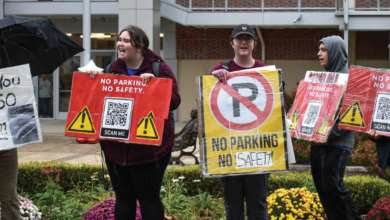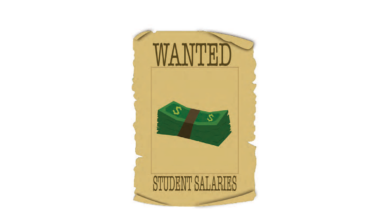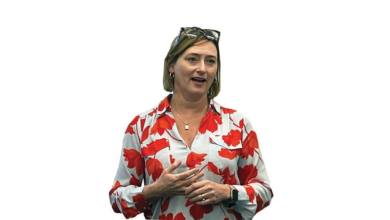
Rider’s road to recovery: Cost cutting and strategic investments
By Stephen Neukam and Sarah Siock
Through the narrow lens that can see the horizon, the future for higher education looks uncertain. Massive budgetary problems, predating the devastation done by the coronavirus pandemic, have come to roost, threatening an outlook that promises to be more and more austere.
Rider President Gregory Dell’Omo does not shy away from the reality of these daunting challenges. The administration, strapped with few options, has continued its quest for ways to cut costs. Dell’Omo outlined the university’s delicate balancing act of slashing expenses while simultaneously investing and improving the quality of the institution, in an interview with The Rider News on Nov. 12.
The search for cost-cutting at Rider has led the administration, like many across the country, to find savings in its labor force. In the past few months, Rider has eliminated a total of 20 staff positions, 75 vacant positions and moved to close its College of Continuing Studies (an action under dispute from the faculty union) — moves that are projected to save the university $15 million over the next two years.
Dell’Omo said that letting go of employees is a “last resort” option, one that the university considered after addressing other avenues of cutting expenses. As the administration is set for negotiations with the faculty union this summer, Dell’Omo said that layoffs for faculty are “not part of our plan right now.”
“I can’t take anything off the table given the very unstable environment in which we are operating,” said Dell’Omo. “I don’t envision any of that happening, but I never say never because the environment is changing so rapidly.”
The interview took place one week after Dell’Omo announced at a town hall that the university was projecting a $17.4 million deficit for next year. Dell’Omo outlined the university’s plans to generate revenue and the challenges it presents.
“There is only so much you can do in terms of cutting your expenses before it begins to inflict on the mission of the University. We are looking at new partnerships and we have increased fundraising significantly. However, that still does not pay your bills tomorrow. It is focusing on how you generate revenue in a very challenging COVID environment,” said Dell’Omo.
Rider’s Chapter of the American Association of University Professors President Arthur Taylor acknowledged that the university is searching for a way to cut costs but emphasized that faculty have already made sacrifices that have lowered labor expenses by forgoing raises since 2015.
“Faculty have made significant sacrifices for six years — the entire duration of President Dell’Omo at Rider University,” said Taylor. “Those sacrifices have reduced labor costs significantly.”
As good news emerges about the potential of a vaccine for the virus, the exact timeline for a society that can ease back to “normal” remains unclear. The health risks for students kept many of them away from campus this semester, with Rider setting a limit on the students it could accommodate in its housing — a major blow to its revenues. Dell’Omo was hopeful that by fall 2021, the university can be “on the road back to somewhat normalcy.”
“That’s the best case scenario,” said Dell’Omo. “And then we can begin to hopefully get some revenue back on board and continue along our strategy of trying to continue raising the profile of the university.”
Dell’Omo said that while the university met its mark for fall enrollment this semester, it was experiencing a lag in new student applications for next year. Colleges and universities across the country are facing similar enrollment challenges due to the pandemic.
The dramatic shift in environment has not shaken Dell’Omo from his vision on how to move the university forward and make it more attractive in a hyper- competitive arena — a philosophical difference that has caused tension between the president and factions within the university community for years.
Dell’Omo explained that the university’s financial decisions were not as simple as cutting costs in certain areas — instead, it is a balance of investing and rerouting resources strategically to push the university forward. While the administration may be taking steps that seem contradictory — cutting labor costs and simultaneously investing in campus infrastructure — Dell’Omo argued that it is all part of a holistic approach.
“When students look at universities, they look at the academic rotation, they look at the campus, they look at the residence halls, they look at the safety. So many things all play into their assessment. I would argue that Rider was greatly underfunded for a long time in its infrastructure on this campus, both academically and Student Life wise. That is something we’ve been trying to correct,” said Dell’Omo.
Taylor argued that the administration’s approach to improvement has not been as encompassing, decrying the fact that the president “has not committed to an investment in faculty, period.”
As universities scramble to find ways to grow revenues, experts have suggested that they focus on demographic groups beyond traditional college students — an area of growth that Dell’Omo said the university is focused on.
However, in recent months the university decided to close its College of Continuing Studies. The college served nontraditional students who were working to complete unfinished college degrees and its closure will save the university $500,000 annually. Dell’Omo said the decision to eliminate the college was made in part due to the outdated structure of CCS. He added that the university is still focusing on an adult student demographic for new enrollment and that the programs from the college were integrated into existing academic programs.


